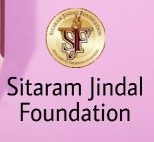
The United Progressive Alliance (UPA) is a political alliance in India consisting of multiple political parties. It was formed in 2004 and has played a significant role in Indian politics since then. In this response, I will provide you with detailed information about the UPA alliance, its formation, key parties involved, its ideology, major achievements, and challenges faced.
Formation of the UPA:
The UPA was formed in May 2004 after the Indian general elections, where no single party could secure a clear majority in the Lok Sabha, the lower house of Parliament. The Congress Party, led by Sonia Gandhi, emerged as the single largest party, but it fell short of the required majority. To form a stable government, the Congress Party reached out to various regional and left-wing parties and formed a coalition called the United Progressive Alliance.
Key Parties:
1. Indian National Congress (INC): The Indian National Congress is the principal party in the UPA alliance. It is one of the oldest political parties in India and has a significant presence across the country. The INC has a long history of leading the Indian independence movement and has governed India for several terms.
2. Nationalist Congress Party (NCP): The NCP is a regional party primarily based in the state of Maharashtra. It was formed in 1999 by Sharad Pawar, a prominent political leader. The NCP has been a key partner of the UPA and has played a crucial role in Maharashtra politics.
3. Dravida Munnetra Kazhagam (DMK): The DMK is a regional party based in the southern state of Tamil Nadu. It has a strong presence in the state and has been a crucial ally of the UPA. The DMK has advocated for social justice and regional autonomy.
4. Rashtriya Janata Dal (RJD): The RJD is a regional party primarily based in the state of Bihar. It was founded by Lalu Prasad Yadav and has been a key player in Bihar politics. The RJD has been associated with issues related to social justice and empowerment of marginalized communities.
5. Trinamool Congress (TMC): The TMC is a regional party based in the state of West Bengal. It was founded by Mamata Banerjee and has gained prominence in recent years. The TMC has been known for its focus on regional autonomy and development.
Ideology:
The UPA alliance is a center-left coalition that espouses a progressive and inclusive ideology. It emphasizes social welfare, economic reforms, secularism, and inclusive growth. The alliance aims to bridge the gap between different sections of society and promote the welfare of marginalized communities. It has often advocated for pro-poor policies, rural development, and empowerment of women and minorities.
Major Achievements:
1. Right to Information (RTI) Act: The UPA government enacted the RTI Act in 2005, which empowered citizens to seek information from public authorities. This legislation has been instrumental in promoting transparency and accountability in governance.
2. Mahatma Gandhi National Rural Employment Guarantee Act (MGNREGA): The UPA introduced the MGNREGA in 2005, which guarantees a minimum of 100 days of wage employment per year to rural households. It has provided livelihood opportunities and social security to millions of rural workers.
3. National Rural Health Mission (NRHM): The UPA launched the NRHM in 2005, with the aim of providing accessible, affordable, and quality healthcare to rural populations. It focused on improving healthcare infrastructure, reducing maternal and infant mortality rates, and strengthening healthcare delivery systems.










